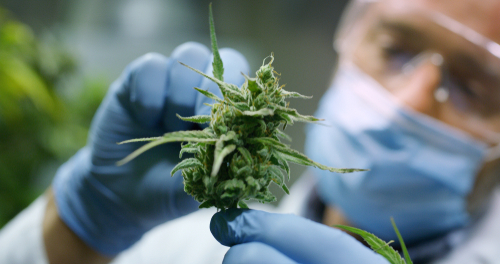
Jul 15, 2021
Paingone
Could Tarantula Venom Treat Chronic Pain?
The University of California, Davis is currently researching how venom from tarantulas could be used to alleviate chronic pain. The study, partially funded by the National Institutes of Health, focuses on how specific proteins and peptides in the venom could be used as a new, non-addictive pain reliever.
According to distinguished professor of entomology Bruce Hammock, “Spiders and scorpions have millions of years of evolution optimizing peptide, protein and small-molecule poisons in their venom, which we can take advantage of. The same venoms that can cause pain and neurological dysfunction can also help nerves work better and reduce pain.”
Researchers are focusing on the venom of the Peruvian green velvet tarantula and how it can prevent pain signals transmitting between nerves and muscles. Future research will be needed to determine a way to modify the toxic protein to only impact sensory nerves; otherwise, it could also affect the brain.
Although the research is in its early stages, it is hoped that the eventual result will be a new way to treat pain that is stronger than OTC medications but without the side effects of opioids. At least one peptide being studied shows promise of delivering the pain relief of morphine without unpleasant side effects.
First Surgery to Implant Back Pain Relief Device Completed at UC San Diego Health
A new device providing neurostimulation to nerves and muscles in the back may hold promise for those suffering from chronic low back pain. The device uses electrical impulses to stimulate specific muscles and nerves in the lower spine and surrounding area. At UC San Diego, the device has been implanted into a patient for the first time.
According to Krishnan Chakravarthy, MD, Ph.D., director of clinical pain research at the UC San Diego Health Center for Pain Medicine, “We are seeing incredible innovation in using neuromodulation to target chronic pain in a more personalized approach. We have learned that over time patients with mechanical back pain experience degeneration of their multifidus muscle — a series of small, triangular muscle bundles located on either side of the spinal column. By targeting this muscle with neurostimulation, we can not only reduce pain but potentially restore function.”
The surgery is relatively simple and can be done as an outpatient procedure. It takes about an hour to implant the device, which is about the size of a pacemaker. Leads from the device provide stimulation to lumbar multifidus muscles that are responsible for stabilizing the back. Neurostimulation is applied twice a day for a half-hour via a remote control used by the patient. An added benefit is that the stimulation reduces pain and helps rehabilitate core muscles to stabilize the lower back.
Peptide May Stop Side Effects of Marijuana for Those with Chronic Pain
Many chronic pain sufferers turn to cannabis for pain relief, but the side effects, including the impact on memory and cognitive function, can be brutal over the long term. In a recent issue of the ACS’ Journal of Medicinal Chemistry, researchers announced they had developed a peptide that minimizes or eliminates the side effects of cannabis Sativa without reducing its pain-relieving effects. While the research has only focused on using cannabis to treat pain in mice, it is believed the results will carry over to humans.

The new peptides disrupt the interaction between pain receptors and other receptors that bind serotonin, a neurotransmitter responsible for regulating memory and other cognitive processes. After being injected with the peptide, memory loss due to HTC was minimized in the mice. Researchers then altered the peptides to be more stable, smaller, and able to be administered orally. Mice treated with the new peptide experienced pain relief from THC without loss of cognitive function or other side effects.
Chronic Pain is on the Rise in the U.S.
Researchers have published an article in the journal Demography that outlines the troubling increase in chronic pain suffered by adults across all demographics in the United States. The research indicates that the most significant increase in chronic pain prevalence has been in lower socioeconomic groups.
The article also showed higher rates of chronic pain in individuals who suffered from physical or mental health issues. Some doctors do not take complaints of chronic pain seriously or treat it with minimal intervention among those at lower socioeconomic levels. According to the study, chronic pain increased over ten years for older adults, males, and Black individuals, particularly those from lower socioeconomic groups with less education. The increase was less significant among females and those with higher education and more disposable income.
“We looked at the data from every available perspective, including age, gender, race, ethnicity, education, and income, but the results were always the same: There was an increase in pain no matter how we classified the population,” noted Dr. Hanna Grol-Prokopczyk, associate professor of sociology in the University at Buffalo College of Arts and Sciences, and co-author of the paper.
According to the study, chronic pain is increasingly being experienced by those at lower income levels. While pain increased by 14% over ten years for those making an income four times the poverty level, it increased 42% for those making twice the poverty level. While health issues, including diabetes and heart disease, were significant causes of chronic pain for older individuals, mental health issues, depressions, and alcohol figured more prominently for middle-aged and younger adults.
The study indicates that more time and money are needed for additional research into chronic pain and its impact on health and economic conditions in the United States.
This Week’s Pain Fact:
One in ten individuals who commit suicide in the United States suffered from chronic pain. Of those, 22% suffered from chronic back pain, higher than the rate for cancer pain.
Is Paingone helping your patients and your practice?
Tell us your success story.
A robust retail strategy is essential to growing your practice.
You only have so many hours a week available for appointments. The fastest way to increase your bottom line is to incorporate profitable products that generate repeat business and build your reputation as a medical professional. That’s where Paingone comes in.
Contact us below to learn more about our products, wholesale pricing and how Paingone can benefit your practice.

